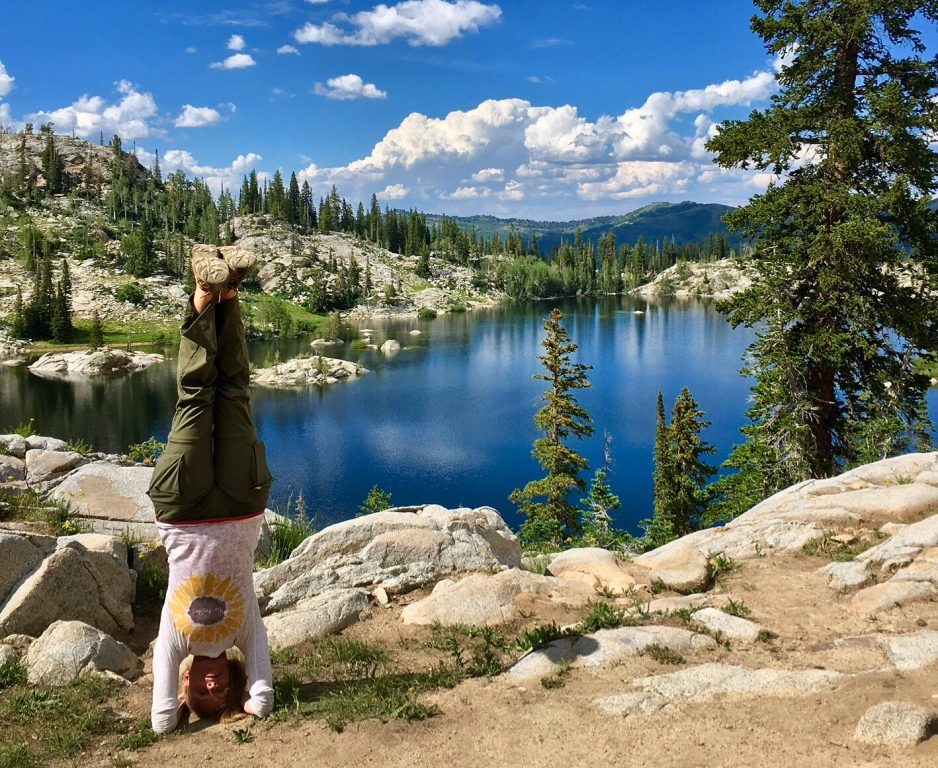
Udana vayu, also known as “ascending air,” is the prana vayu that directs prana from the lower chakras to the upper chakras. This upward-moving energy carries the awakened kundalini—our dormant spiritual energy—through the chakras as it ascends, facilitating a deeper connection to higher consciousness. Udana vayu is primarily located between the heart and the head, where it governs our ability to express ourselves and communicate clearly.
As the expressive vayu, udana is closely connected to the throat center, influencing communication, self-expression, and the health of the thyroid and parathyroid glands, which regulate metabolism and overall vitality. When udana vayu is balanced, we feel confident, articulate, and empowered to share our thoughts and ideas with the world. We also feel aligned with our higher aspirations, able to reach for and achieve our goals.
The Role of Udana Vayu in Communication and Expression
Udana vayu is key to both our ability to communicate and our capacity to express our highest potential. When this vayu moves freely, we are clear in our speech, confident in our interactions, and in touch with our truest voice. We express ourselves with authenticity and ease, and we feel capable of rising to new heights in both personal and professional pursuits.
Practice:
- Voice and Sound Practice: One of the best ways to cultivate healthy udana vayu is through vocal expression. Try chanting or singing to activate your throat center. You can also practice vocal toning, which involves creating a continuous sound or hum that resonates through the throat, stimulating udana. As you vocalize, focus on the energy moving upward from your heart, through your throat, and out into the world.
The Signs of Udana Vayu Imbalance
When udana vayu is out of balance, we may experience difficulties in communication. This might show up as being at a loss for words, speaking too much without clarity, or expressing ourselves in ways that are not aligned with our true intentions. We may find it hard to articulate our ideas or understand the perspectives of others. On a deeper level, an imbalance in udana vayu can leave us feeling defeated, uncertain, or disconnected from our higher purpose.
Practice:
- Silent Reflection: If you’re feeling disconnected from your ability to express yourself or communicate effectively, spend time in silence to center yourself. Sit in a comfortable position and close your eyes. Begin by simply noticing the flow of your breath, then shift your awareness to your throat center. Allow any tension to release as you sit in stillness, creating space for clarity and understanding to emerge.
Activating Udana Vayu Through Inversions
Udana vayu is strongly activated by samana vayu, which is in turn balanced by prana and apana vayu. To activate udana, we can engage in asanas that encourage an upward flow of energy, particularly inversions. Inversions like Setu Bandha Sarvangasana (Bridge Pose), Sarvangasana (Shoulderstand), Halasana (Plow Pose), Matsyasana (Fish Pose), and Sirsasana (Headstand) are powerful ways to stimulate the upward flow of prana, which supports udana vayu.
Practice:
- Inversion Practice: Incorporating inversions into your asana practice helps activate udana vayu. Begin with simpler poses like Bridge Pose, and as you build strength and confidence, progress to poses like Shoulderstand or possibly Headstand. If you’re not ready for full inversions, simply lying with your legs elevated against the wall (legs up the wall pose) can help stimulate this upward energy. Focus on the sensation of energy rising from the base of your spine to the crown of your head, and feel the connection to your higher aspirations.
The Connection Between Asana and Meditation
Inversions not only activate udana vayu but also set the stage for a deeper meditation practice. By practicing inversions, you help clear and balance the energy channels, making it easier to settle into a focused and grounded meditation. The mind is naturally more receptive after inversions, allowing for greater clarity and ease in meditation.
Practice:
- Meditation after Inversions: After practicing any kind of comfortable inversion, take a few moments to sit in meditation. Close your eyes and focus on your breath, allowing any lingering tension to release. As you meditate, imagine udana vayu as a rising energy that connects you to your higher self, guiding you toward greater clarity, expression, and purpose.
Elevating Your Yoga Practice with Udana Vayu
Udana vayu is a powerful force that helps elevate our consciousness, allowing us to communicate authentically, express our true selves, and achieve our highest potential. By understanding and working with udana, we can activate our ability to speak with confidence, pursue our goals with clarity, and deepen our connection to our inner wisdom.
When we consciously work to invite udana vayu to move freely through breath, asana, and mindful practices, we create space for our highest aspirations to unfold. In this way, yoga becomes not only a physical practice but also a transformative journey toward self-expression and enlightenment.
Finishing your asana practice with inversions, even simply spending some time in Bridge Pose, will help set your mind for a comfortable Savasana (Corpse Pose) at the end of practice. And if your asana practice is followed by a seated meditation, you will find meditation to be easier after inversions due to the activation of udana vayu.
Udana vayu is the fourth of the five prana vayus, all working together to support the subtle energies that underlie the yoga practice. By understanding these five vayus better, we are able to deepen our experience of the yoga practice. It becomes obvious that yoga is far more than touching our toes and taking a deep breath. This all-encompassing practice exists on many levels, which can be revealed should you choose to explore them.
To explore an overview of all five prana vayus and their interconnected roles, click here.
